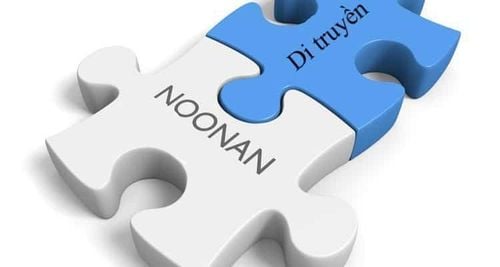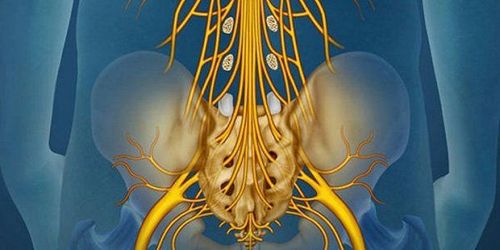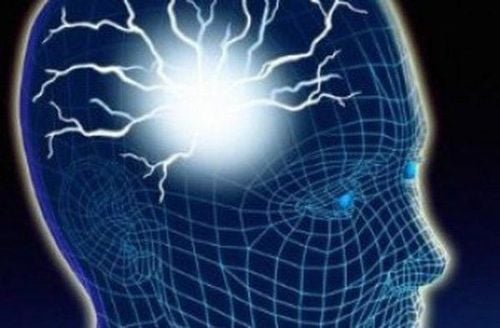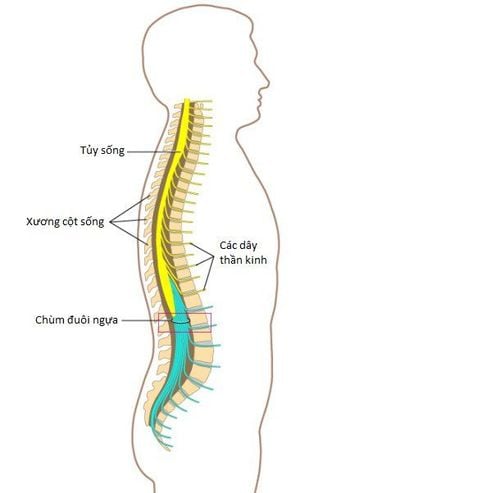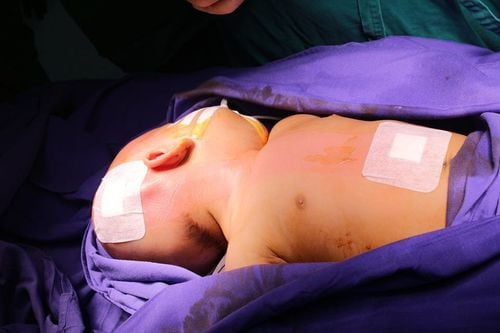This is an automatically translated article.
Article by Master, Doctor Vu Duy Dung - Department of General Internal Medicine - Vinmec Times City International HospitalThe most common neurodermatologic diseases in neuropsychiatric clinical practice include NF1, Legius syndrome, neurofibromatosis type 2 (NF2), Noonan syndrome with multiple moles, multiple sclerosis... Most of the neurodermatologic syndromes are classified as single-gene disorders. However, they have autosomal dominant, autosomal recessive or X-linked inheritance patterns.
1. Overview of neuro-dermatological diseases
Neuro-dermatopathies are a heterogeneous group of diseases affecting mainly the skin and central nervous system. Although they are diverse in clinical morphology and genetics, they share a common origin in defects in the development of primitive embryonic ectoderm tissue, which later develops into the skin and nervous system. terrible.Most neurodermatologic syndromes are classified as monogenic disorders. However, they have autosomal dominant, autosomal recessive, or X-linked inheritance patterns.
To make a diagnosis, neurologists need a certain amount of basic knowledge. and should be familiar with a broad spectrum of neuro-dermatologic disorders because of the prevalence of central and peripheral nervous system involvement in these conditions.
A simple routine skin examination can often open up many differential diagnoses and help improve patient care and treatment in these cases. Recent advances in gene technology have enhanced our understanding of the genetic defects and specific protein functions that are the cause of many neuro-dermatopathies. At the same time, it is also oriented towards targeted and biologically based therapies that are being developed for the treatment of many complications of the disease.
Neuromuscular diseases are now included in the RAS group of diseases (RASopathy), a group of related diseases caused by mutations in genes that regulate the RAS-MAPK pathway (mitogens). -activated protein kinases). This important biological pathway governs functions such as growth, reproduction, differentiation, and programmed cell death. There is significant clinical overlap among RAS pathologies, presenting with characteristic facial dysmorphic features as well as skin, cardiac, ocular, musculoskeletal, and gastrointestinal abnormalities. Many of these conditions also predispose to both benign and malignant tumors. Most are accompanied by a broad spectrum of mild to severe developmental delays.
RAS conditions with neurodermatologic features include neurofibromatosis type 1 (NF1), Legius syndrome, Noonan syndrome with multiple moles (formerly known as LEOPARD syndrome) and malformation syndrome capillary-arteriovenous malformation. Although Noonan syndromes, heart-face-to-skin syndromes, and Costello syndromes also play a role in the RAS-MAPK pathway, they generally do not have the characteristic hyperpigmented lesions seen in other pathologies of the liver. RAS-MAPK pathway. Many other well-understood neuromuscular diseases are involved through this network of biological connections.
The most common neuro-dermatologic disorders in neurologic clinical practice presented in this series include NF1, Legius syndrome, neurofibromatosis type 2 (NF2), Noonan syndrome with multiple nodules flies, tuberous sclerosis, Sturge-Weber syndrome and incontinentia pigmenti. Issues on the genetic basis, diagnostic criteria, clinical features, and treatment will be presented for each disease.
Table: Neuro-dermatopathies common to neurologists
| Hội chứng | Kiểu di truyền | Nhiễm sắc thể | Gen | Protein |
| Sao mạch chảy máu di truyền | Trội, thường | 12q1, 9q34, 18q21.1, 10q11.22 | ACVRL1, ENG, SMAD4, GDF2 | Nhiều |
| Hội chứng Legius | Trội, thường | 15q13.2 | SPRED1 | SPRED1 |
| U xơ thần kinh typ 1 | Trội, thường | 17q11.2 | NF1 | Neurofibromin |
| U xơ thần kinh typ 2 | Trội, thường | 22q12.2 | NF2 | Merlin/schwannomin |
| Hội chứng ung thư biểu mô tế bào đáy nevoid | Trội, thường | 9q22.3-31, 1p32.2-p32.1 | PTCH1 | Sonic hedgehog |
| Hội chứng Noonan với nhiều nốt ruồi | Trội, thường | 12q24, 3p25.2, 7q34 | PTPN11, RAF1, BRAF | Nhiều |
| Xơ cứng củ | Trội, thường | 9q34.3, 16p13.3 | TSC1, TSC2 | Hamartin, tuberin |
| Hội chứng Von Hippel-Lindau | Trội, thường | 3p26-p25 | VHL | pVHL |
| Sao mạch thất điều | Lặn, thường | 11q22.3 | ATM | ATM |
| Nhiễm sắc tố dầm dề | Trội, liên kết X | X | IKBKG | NEMO/ IKBKG |
| Hội chứng bớt mụn nước cao su xanh | Rải rác | Chưa biết | Chưa biết | Chưa biết |
| Bớt sắc tố bẩm sinh/Nhiễm sắc tố thần kinh-da | Rải rác | Chưa biết | Chưa biết | Chưa biết |
| Hội chứng Sturge-Weber | Rải rác | 9q21 | GNAQ | Guanine nucleotide-binding protein G(q) dưới đơn vị alpha |
| Giảm sắc tố Ito | Thể khảm | Nhiều | Nhiều | Nhiều |
| Các hội chứng bớt biểu bì | Nhiều | Nhiều | Nhiều | Nhiều |
2. Legius syndrome
Legius syndrome was first described in 2007 in a group of people who met the NIH diagnostic criteria for NF1 but did not have a mutation in the NF1 gene. A heterozygous germline mutation in the SPRED1 gene on chromosome 15q13.2 has been identified as the cause of this NF1-like syndrome. As with the NF1 gene, this gene encodes a protein that acts as a tumor suppressor to downregulate the RAS-MAPK pathway. An autosomal dominant genotype with complete penetrance has been identified.2.1 Clinical Features Studies have shown that, about 5% of people with Legius syndrome also meet the NIH diagnostic criteria for NF1. This raises questions about the specificity of the clinical criteria that have been used by clinicians for several decades to definitively diagnose NF1.
Legius syndrome presents with features including coffee milky spots and an enlarged head with or without freckles in the armpits and groin. However, other signs of NF1 would be absent, including Lisch nodules, gliomas of the optic pathway, neurofibromatosis, tibial dysplasia, and malignant peripheral schwannoma.
Lipomas have been found in some families with SPRED1 mutations and should not be clinically confused with neurofibromatosis. Facial dysmorphic features are similar to those found in Noonan syndrome, including distal binocular malformations, drooping eyelids, and low and posteriorly turned ears. Learning disabilities and attention deficit hyperactivity disorder are also possible but not as severe as in NF1. Malignant lesions associated with Legius syndrome including: Leukemia, breast cancer and ovarian epidermal neoplasm...have been reported but are rare and not surprising because of damage to the RAS-MAPK pathway.

Continue reading part 2: Learn about Neuro-Skin diseases (part 2)
Please dial HOTLINE for more information or register for an appointment HERE. Download MyVinmec app to make appointments faster and to manage your bookings easily.
References: Rosser T. Neurocutaneous Disorders. Continuum (Minneap Minn) 2018;24(1, Child Neurology):96-129.




